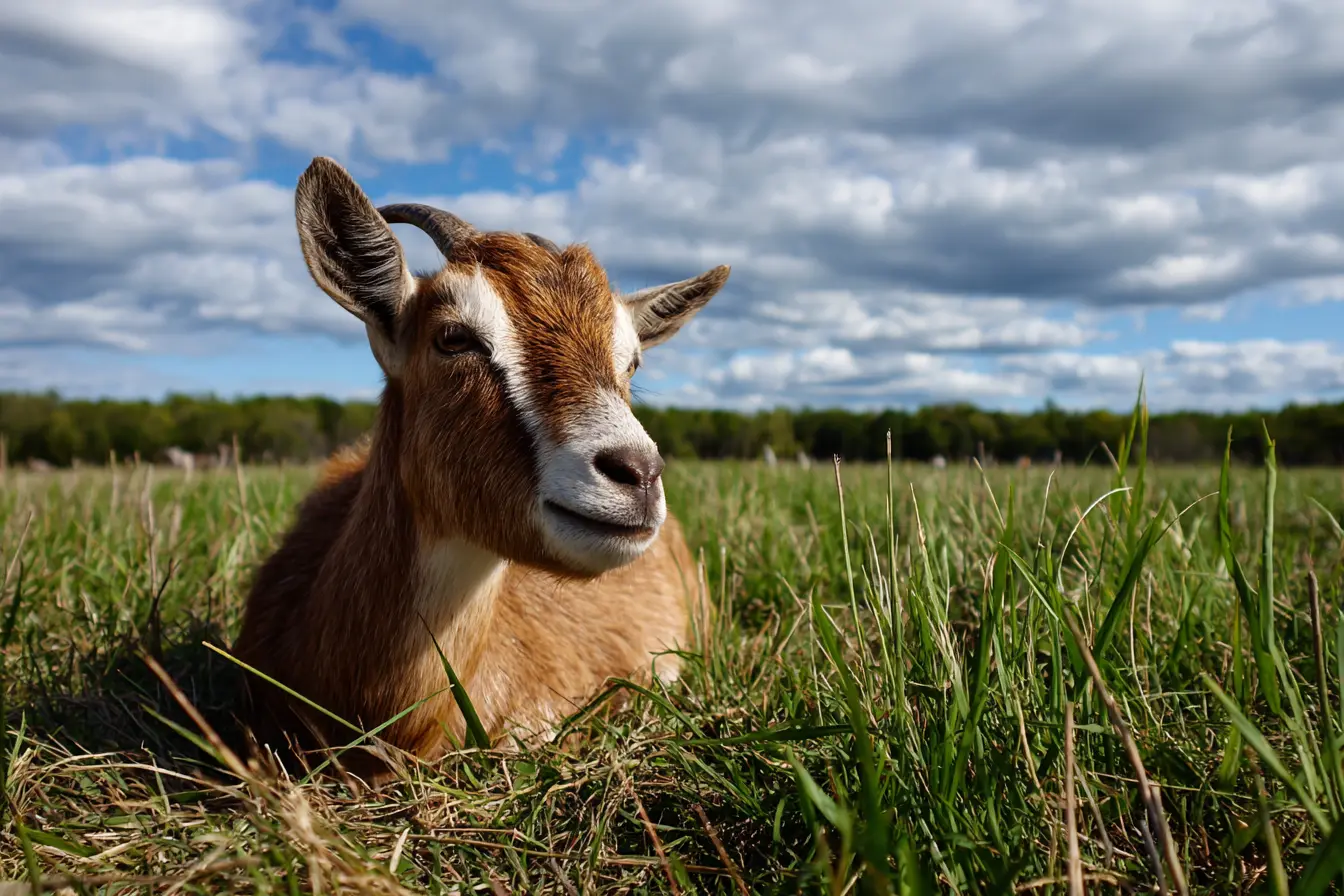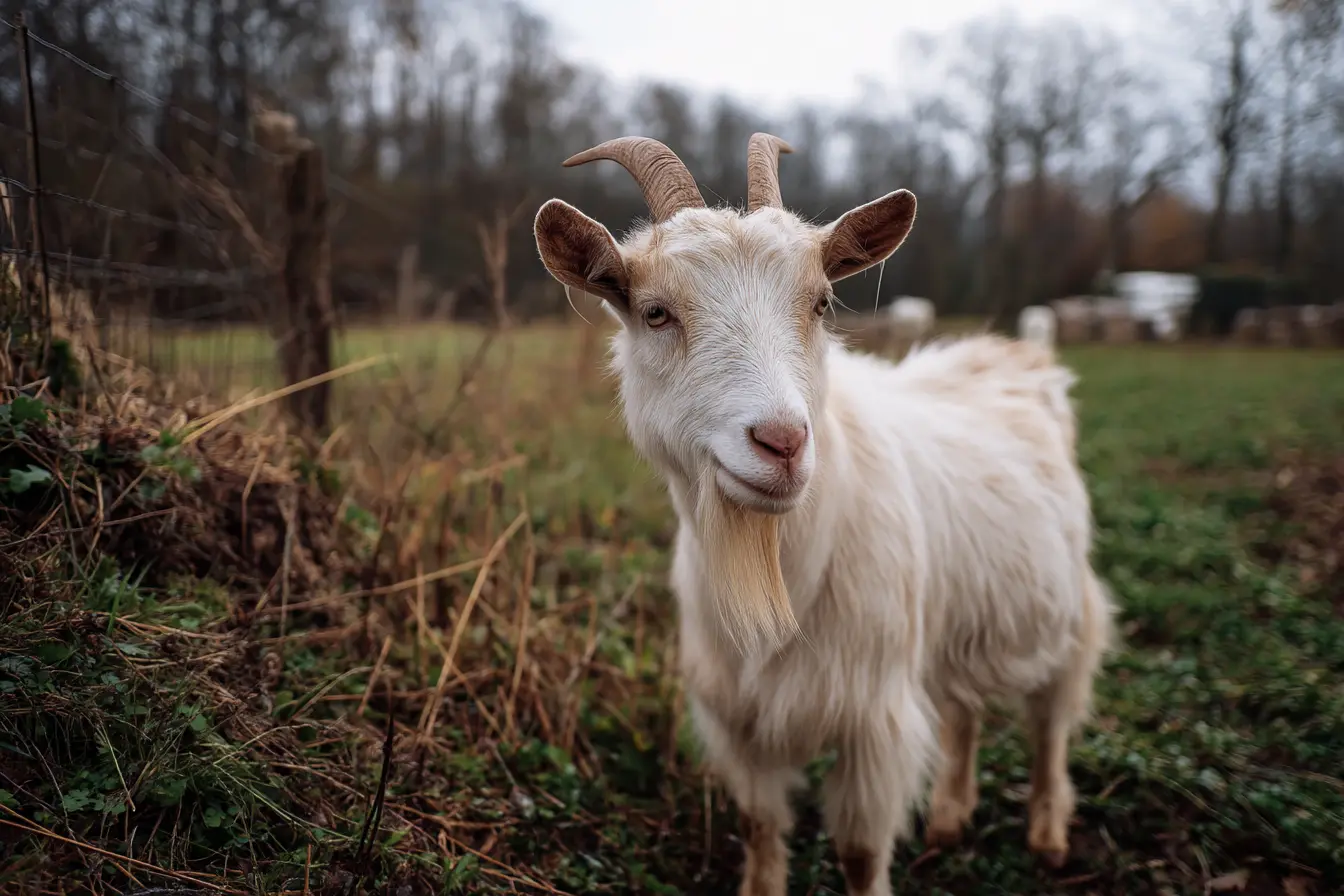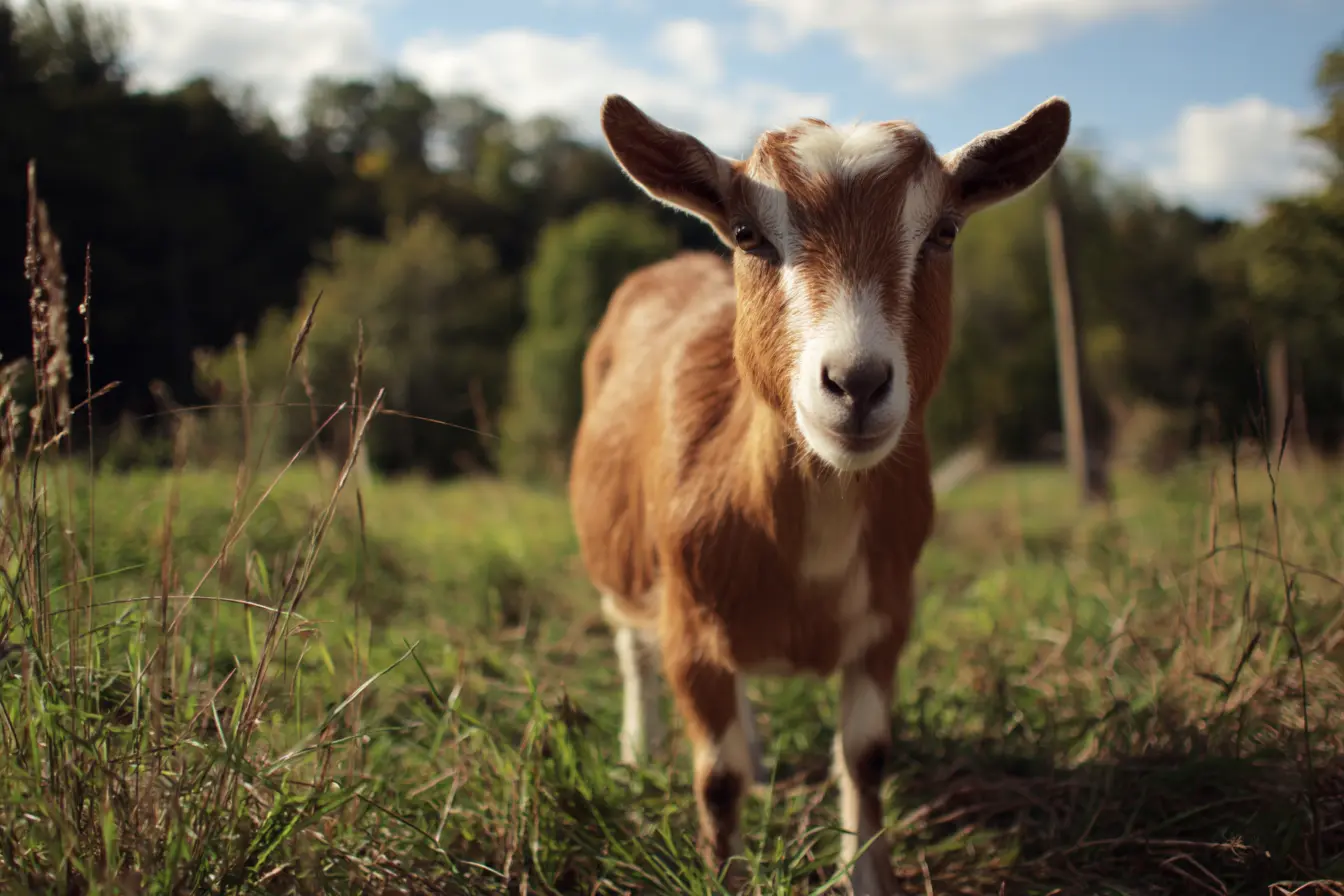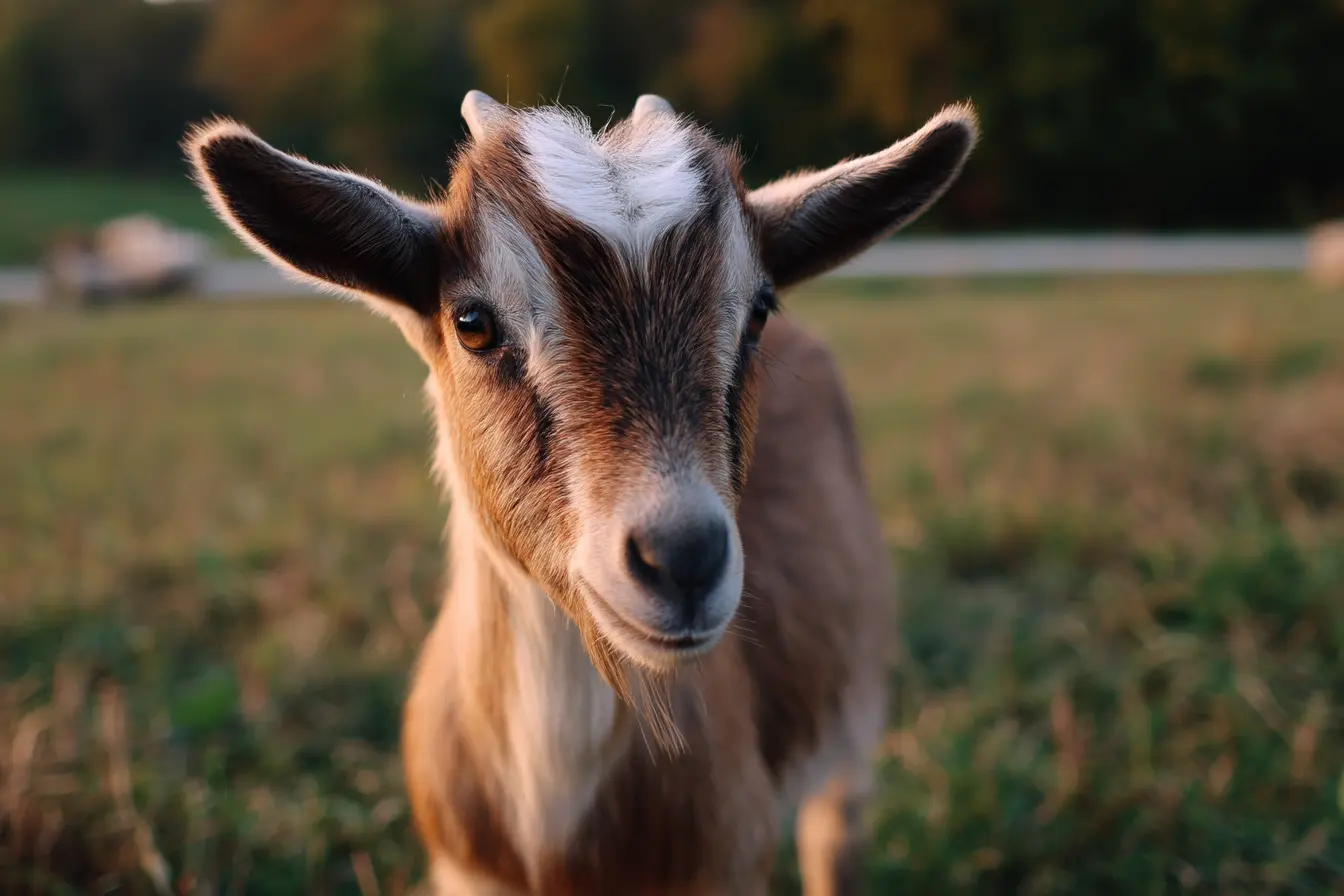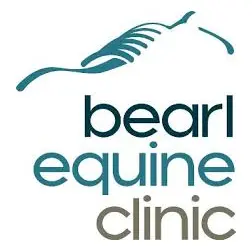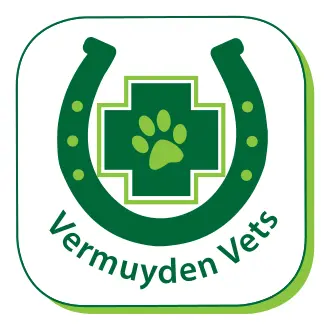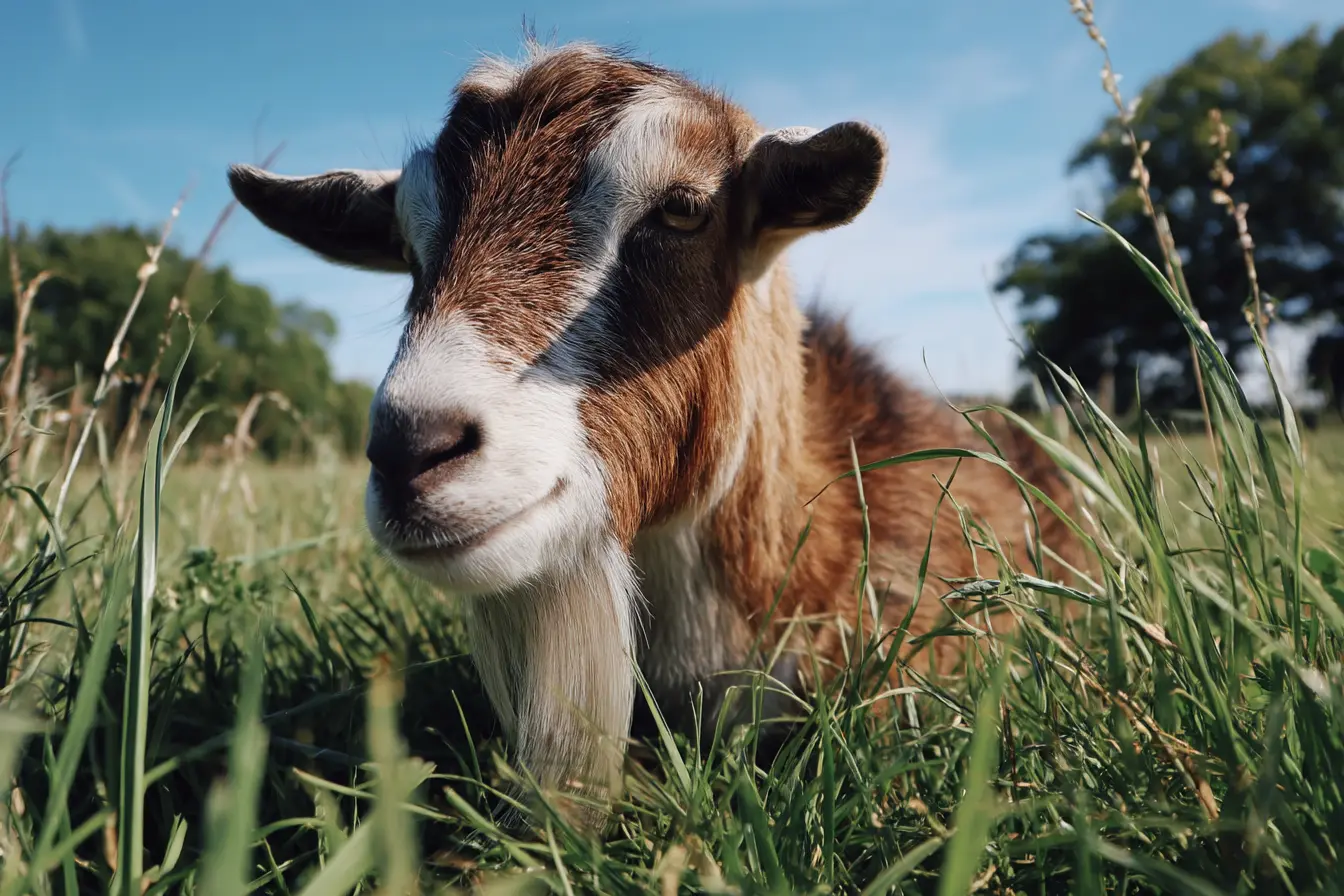
Goats and Sunburn: What Every Owner Needs to Know
Goats are hardy and adaptable animals, but they are not immune to the damaging effects of the sun. Just like humans, goats can suffer from sunburn, especially those with lighter skin, thin coats, or areas of exposed skin. Without proper care, sunburn can cause pain, distress, and even lead to serious health issues such as skin infections and cancer. This guide covers everything goat owners need to know about sunburn — from prevention and identification to treatment and long-term care.
Can Goats Really Get Sunburned?
Yes, goats can get sunburned. Although their hair provides some level of natural protection, it is not foolproof, particularly for goats with sparse coats, light-coloured hair, or pink skin. Prolonged exposure to ultraviolet (UV) rays can damage their skin, leading to discomfort, injury, and long-term problems.
Which Goats Are Most at Risk?
Certain goats are more vulnerable to sunburn, including:
- Light-coloured goats: Breeds such as Saanens and Anglo-Nubians often have paler skin and hair, offering less natural UV protection.
- Short-haired or hairless goats: Goats with fine coats have less barrier against sunlight.
- Young kids: Their skin is thinner and more sensitive.
- Goats with clipped or shaved areas: Whether for medical, management, or show purposes, these areas are at higher risk.
- Goats recovering from skin conditions: Conditions like mites or fungal infections can expose bare patches of skin.
Common Areas Affected by Sunburn
The parts of a goat most commonly affected by sunburn include:
- Nose and muzzle
- Ears (especially the tips)
- Around the eyes
- Udder and teats (particularly in dairy goats)
- Belly and inner thighs (especially if lying in the sun)
Goats often sunbathe by lying down in open areas, which can expose their underbellies to UV rays.
Signs of Sunburn in Goats
Signs of sunburn can range from mild redness to severe skin injury. Look out for:
- Red, inflamed, or tender skin
- Dry, cracked, or peeling areas
- Blistering (in more serious cases)
- Reluctance to be touched or groomed
- Decreased appetite or general lethargy
- Signs of secondary infection (swelling, pus, foul smell)
Severe cases of sunburn can lead to systemic illness if left untreated.
How to Protect Goats from Sunburn
Provide Adequate Shade
Access to shade is the most important prevention strategy:
- Natural shade from trees, bushes, and hedges is ideal.
- Purpose-built shelters, such as field shelters or barns, offer reliable protection.
- Ensure all goats have access to shade at all times, particularly during peak UV hours (10am–4pm).
Apply Goat-Safe Sunscreen
For goats particularly at risk:
- Apply non-toxic, animal-safe sunscreen to exposed areas such as the nose, ears, and udders.
- Choose products that are fragrance-free, non-toxic, and approved for livestock use.
- Reapply regularly, especially if the goat has been rubbing or after rainfall.
Important: Never use human sunscreens without veterinary approval, as many contain ingredients toxic to animals.
Encourage Natural Protection
Allow goats access to areas where they can dust bathe or mud wallow:
- Dust and mud can act as a natural sunblock.
- This behaviour also helps deter external parasites.
Adjust Grazing Schedules
Manage turnout times to reduce sun exposure:
- Grazing early in the morning or later in the evening is safer.
- Provide shaded feeding and watering stations to encourage shelter use.
Consider Protective Clothing
For show goats or vulnerable individuals:
- Lightweight, breathable covers can protect against UV exposure.
- Special goat coats designed for sun protection are available but must be fitted correctly to avoid overheating.
Special Considerations: Photosensitisation
In addition to ordinary sunburn, goats can suffer from photosensitisation** — a condition where the skin becomes abnormally sensitive to sunlight due to:
- Ingestion of certain plants: e.g., St John's Wort, buttercups, clovers.
- Liver damage: Due to ingestion of toxic plants like ragwort or liver infections.
Signs of photosensitisation include:
- Severe skin inflammation even after minimal sun exposure
- Blistering and skin peeling
- Depression and reluctance to move
- Loss of appetite
If you suspect photosensitisation, move goats out of sunlight immediately and consult a vet.
Treating Sunburn in Goats
If a goat suffers from sunburn:
- Move the animal to a shaded or indoor area.
- Cool the skin gently with clean, cool (not cold) water.
- Apply soothing veterinary-approved treatments, such as aloe vera gels formulated for livestock.
- Monitor for signs of infection, and administer antibiotics if prescribed.
- Consult a vet for severe cases, blistering, or if the goat appears unwell.
Pain relief and supportive care may be necessary for moderate to severe sunburn.
Long-Term Risks of Sun Exposure
If not properly managed, sunburn can lead to:
- Skin cancers: Especially squamous cell carcinoma in light-skinned areas.
- Chronic dermatitis: Leading to persistent irritation and infection.
- Reduced milk production or growth rates: Due to stress and pain.
Preventing sunburn is not only kinder but also better for your goats’ productivity and overall wellbeing.
Final Thoughts
While goats are tough and adaptive, their skin needs protection during sunny months. By providing adequate shade, using goat-safe sunscreen, adjusting grazing times, and being alert to the signs of sunburn, you can ensure your goats remain comfortable, healthy, and thriving throughout the summer.
Related Vets
Vets near you
Speciality vets
- Aquatics vet specialists
- Birds vet specialists
- Camelids vet specialists
- Cats vet specialists
- Cattle vet specialists
- Deer vet specialists
- Dogs vet specialists
- Equines vet specialists
- Exotic vet specialists
- Goats vet specialists
- Pigs vet specialists
- Poultry vet specialists
- Sheep vet specialists
- Small Mammals vet specialists
- Wild vet specialists
